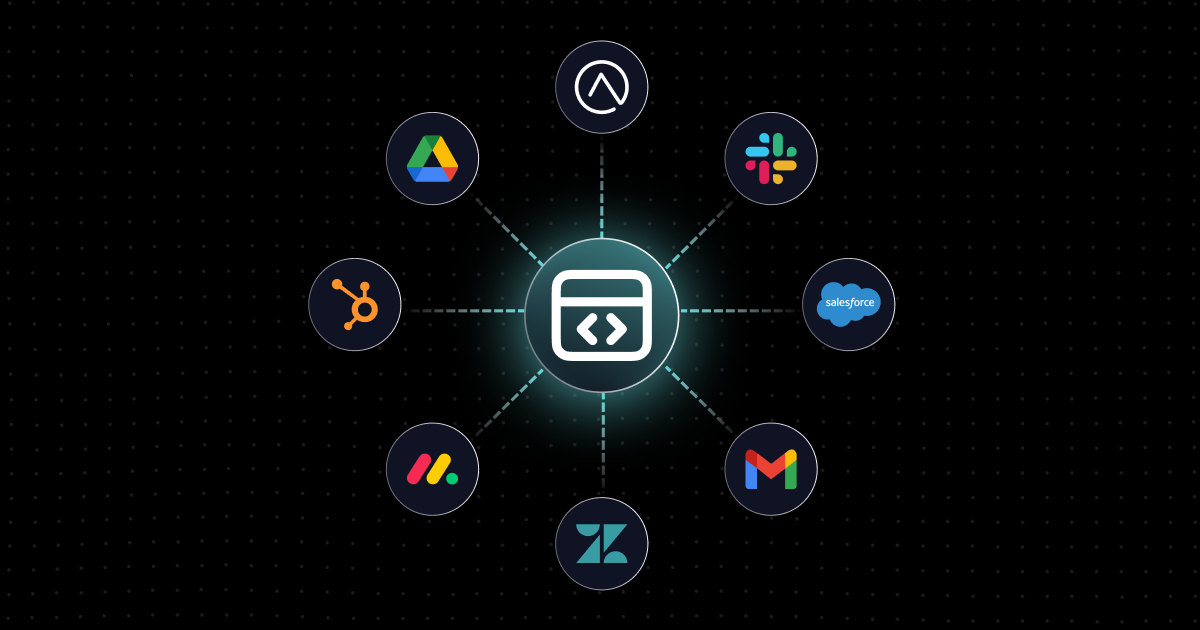In today's market, your B2B SaaS app must include integrations, or it won't be viable in the long run. Connectivity and data sharing are essential to support modern business processing. As a result, integrations are now table stakes for SaaS companies.
If your product is siloed, your customers are missing out on business insights, dealing with inefficiencies because of unnecessary context switching, and probably not excited in a good way about your product's UX.
At this point, you may be thinking, "But we have integrations, so we aren't siloed." Here's the thing, simply having one integration, or 100, isn't enough to say that you aren't siloed.
Let's look at how you can determine if your product is siloed, and to what extent.
Degrees of being siloed
Being siloed doesn't necessarily mean your product is completely cut off from all other apps. But, if it is completely isolated, you are leaving out functionality that could provide substantial wins for your customers. With no integrations, your product is severely limited in how it can grow to support your customers' constantly evolving business needs and priorities.
On the other hand, what if you do have integrations? What if you provide hundreds or even thousands of customers with integrations between your product and the top tools your customers use daily? Are those integrations first-class, or are you providing the bare minimum to meet customer requests for data elements and one-way vs two-way data exchanges? Are these integrations highly configurable, allowing each customer to customize things such as auth and data mapping, or are you using a shallow integration approach?
Finally, what if you are already providing first-class integrations for your customers? You have several integrations; they are fully configurable, and customers can activate them, monitor them, and even do their own troubleshooting when issues arise. How about the integrations that your customers would like to have with your product, but which you've determined don't make sense because they would only benefit very few customers, so the ROI isn't there for your team to create those one-off or custom integrations? Depending on your customer base, you might be taking hundreds or thousands of possible integrations off the table.
Consequences of remaining siloed
Unsurprisingly, the more siloed your product is the greater the negative impact. But, regardless of where your product falls on the continuum we just covered, here are a few of the more critical issues you and your customers will face.
Increased customer churn
It is sometimes said that software customers come for the functionality, but they leave because they aren't being heard. When a customer is small, a simple product with no integrations may provide customer essentials. However, as customers grow, needs evolve as they work with more users, increasingly complex workflows, and more data.
A siloed SaaS product that can't integrate with new systems is a liability, not an asset. When customers outgrow it, they'll move on with a competitor who provides them with the connectivity and flexibility to meet their updated needs.
Inefficient workflows/frustrating UX
As SaaS companies, we often focus on functionality, and that's important. But, customers don't just want a product with X functionality. They also want a product that slots into their ecosystem and is a team player, as it were.
Siloed apps drive the opposite result. When a product doesn't fit in with existing workflows, customers must create workarounds that often require manual data export/import, more context switching, and duplicate data entry. This results in poor UX, and users get frustrated working with tools that create more friction, rather than reducing the friction they already deal with. And frustrated users don't give SaaS apps good reviews.
Stifled customer innovation
When your customers can't exchange the data they need with your app, they lack the richer, more complete data they want for decision-making. This lack of data sharing often leads to missed signals.
For example, here's a sales team with a CRM. But, the team can't sync it with the marketing team's analytics app. As a result, both teams lack insights they could have if the data were combined. Over time, this customer falls behind competitors who have connected tech stacks.
How to break out of the silo
For your customers to have the best experience possible with your product, you need to break out of whichever silo you are in.
If you don't have integrations, incorporate them into your go-to-market strategy
Proactive integration planning saves you from being forced into a position where in-the-moment customer demands and market pressures force you to handle your integrations reactively.
There are many things that go into creating a proper integration strategy, but it starts with prioritizing integrations. You'll want to start with the integrations that provide the most value for your customers and work your way out from there. Remember, your overall goal is to create a scalable, sustainable approach to building, deploying, and maintaining integrations – not just solving for the handful of integrations you may have in front of you right now.
Proactively working on your integrations lets you determine how your product fits into your customers' workflows, supports your long-term product growth strategy, and helps to differentiate your product in the marketplace.
Check out our integration strategy guide for info on prioritization, roadmaps, tech partnerships, requirements, announcements, pricing, and more.
If you have shallow integrations, address functional gaps that are costing your customers time and money
Minimally functional integrations may allow you to check a box, but that's about it. These integrations often only sync minimal data, are uni-directional, don't have good error messaging and resolution, and offer little flexibility to your customers.
To ensure that your customers receive full value, your integrations must go beyond the minimum. Yes, it's extra effort on your part, but a data-rich two-way integration binds your customers more closely to your product than a simple one-way update.
Work with your customers to identify current gaps. Give them the power to configure webhooks or data mapping if that will save them time and money. Make sure they have the tools they need.
If you are providing only the integrations that make sense for you to build, learn your customers' additional integration needs and bridge the gap
Some integrations make sense for you to build. For example, when you've got 50 customers who all use a market-leading CRM, integrating that CRM with your app is an easy win. But what do you do when a customer needs a one-off integration with a home-grown system, and they don't want to pay full price to have you build them a bespoke integration?
You could give the customer access to your API and wish them the best. However, that doesn't usually lead to a satisfied customer or a good integration UX.
Instead, turn your customers loose to create as many custom, one-off integrations as they need with your product. Give them everything from the embedded workflow builder to custom connectors to templates. They are able to satisfy more business requirements, and you keep them in your product with a consistent integration UX.
Do the right integrations
It's not enough to have integrations – you also need the right integrations. It's the only way to give your app a real chance to become the center of your customers' ecosystems.
In a connected world, isolating your product isn't just unhealthy; it's deadly. Even partial isolation can cause more churn, workflow inefficiencies, and customer dissatisfaction than you or your customers want.
The good news is that regardless of how siloed your product is today, it doesn't need to stay that way.
Schedule a demo, and let us show you how you can break down whatever silo your product might be in.




